
The Seychelles bulbul is a member of the bulbul family of passerine birds. It is a common endemic species of the Seychelles, breeding on Mahé, Praslin, La Digue and Silhouette as well as some smaller islands.

Mount Karthala or Karthola is an active volcano and the highest point of the Comoros at 2,361 m (7,746 ft) above sea level. It is the southernmost and larger of the two shield volcanoes forming Grande Comore island, the largest island in the nation of Comoros. The Karthala volcano is very active, having erupted more than 20 times since the 19th century. Frequent eruptions have shaped the volcano's 3 km by 4 km summit caldera, but the island has largely escaped broad destruction. Eruptions on April 17, 2005 and May 29, 2006 ended a period of quiet.
This article is one of a series providing information about endemism among birds in the world's various zoogeographic zones. For an overview of this subject see Endemism in birds.
The Karthala scops owl, also known as the Grand Comoro scops owl or Comoro scops owl, is a small scops owl endemic to the island of Grande Comore in the Comoro Islands.

The Mauritius bulbul, is a songbird belonging to the bulbul family, Pycnonotidae. It is endemic to Mauritius.
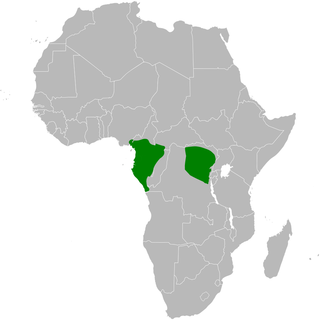
The eastern bearded greenbul is a species of songbird in the bulbul family, Pycnonotidae. It is found from south-eastern Nigeria to Central African Republic, north-eastern Democratic Republic of the Congo, Congo and extreme north-western Angola. Its natural habitats are subtropical or tropical moist lowland forests and subtropical or tropical moist montane forests.

The Malagasy bulbul is a species of songbird in the bulbul family, Pycnonotidae. It is found on Madagascar and other regional islands in the south-western Indian Ocean.

Hypsipetes is a genus of bulbuls, songbirds in the family Pycnonotidae. Most of its species occur in tropical forests around the Indian Ocean. But while the genus is quite diverse in the Madagascar region at the western end of its range it does not reach the African mainland.
The Nicobar bulbul is a songbird species in the bulbul family, Pycnonotidae. It is endemic to the Nicobar Islands.
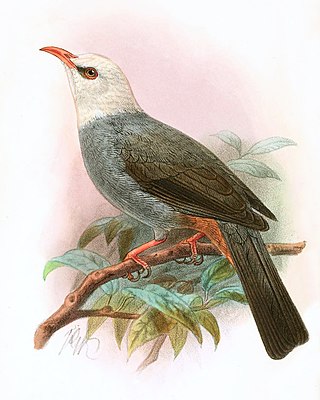
The white-headed bulbul is a songbird species in the bulbul family, Pycnonotidae.

The Javan bulbul is a songbird species in the bulbul family. It is the type species of the genus Ixos. It is endemic to the island of Java in Indonesia in its natural habitat of subtropical or tropical moist montane forests. It is not considered a threatened species by the IUCN.
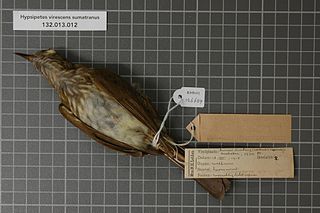
The olive bulbul is a species of songbird in the bulbul family, Pycnonotidae. It is found from southern Myanmar to south-western Thailand and the Malay Peninsula. Its natural habitats are subtropical or tropical moist lowland forests and subtropical or tropical moist montane forests.
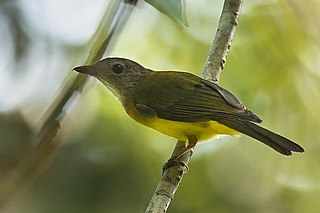
The yellowish bulbul is a species of songbird in the bulbul family, Pycnonotidae.

The Philippine bulbul is a songbird species in the bulbul family, Pycnonotidae.
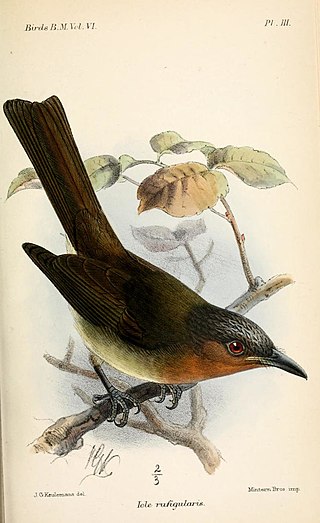
The Zamboanga bulbul is a songbird species in the bulbul family, Pycnonotidae. It is endemic to the Philippines, where its natural habitat is subtropical or tropical moist lowland forests of Basilan and the Zamboanga Peninsula. It is becoming rare due to habitat loss.

The streak-breasted bulbul is a songbird species in the bulbul family, Pycnonotidae.

The Comoros forests is a terrestrial ecoregion which covers the Comoro Islands, which lie in the Mozambique Channel between Madagascar and East Africa. These include four main islands: Grande Comore, Anjouan and Mohéli, of the Union of the Comoros, and Mayotte, a department and region of France.

La Grille is a volcano in the Comoros archipelago on the island of Grande Comore.
The Moheli bulbul is a species of songbird in the bulbul family, Pycnonotidae. It is endemic to the Indian Ocean island of Mohéli. Its natural habitat is subtropical or tropical moist montane forests. Until 2011, it was classified as a subspecies of the Grand Comoro bulbul. It is also considered a sister species to the Seychelles bulbul.

The Comoros blue vanga or Comoro blue vanga is a bird species in the family Vangidae. It is found in the Comoros, where its natural habitats are subtropical or tropical dry forest and subtropical or tropical moist lowland forest.
















